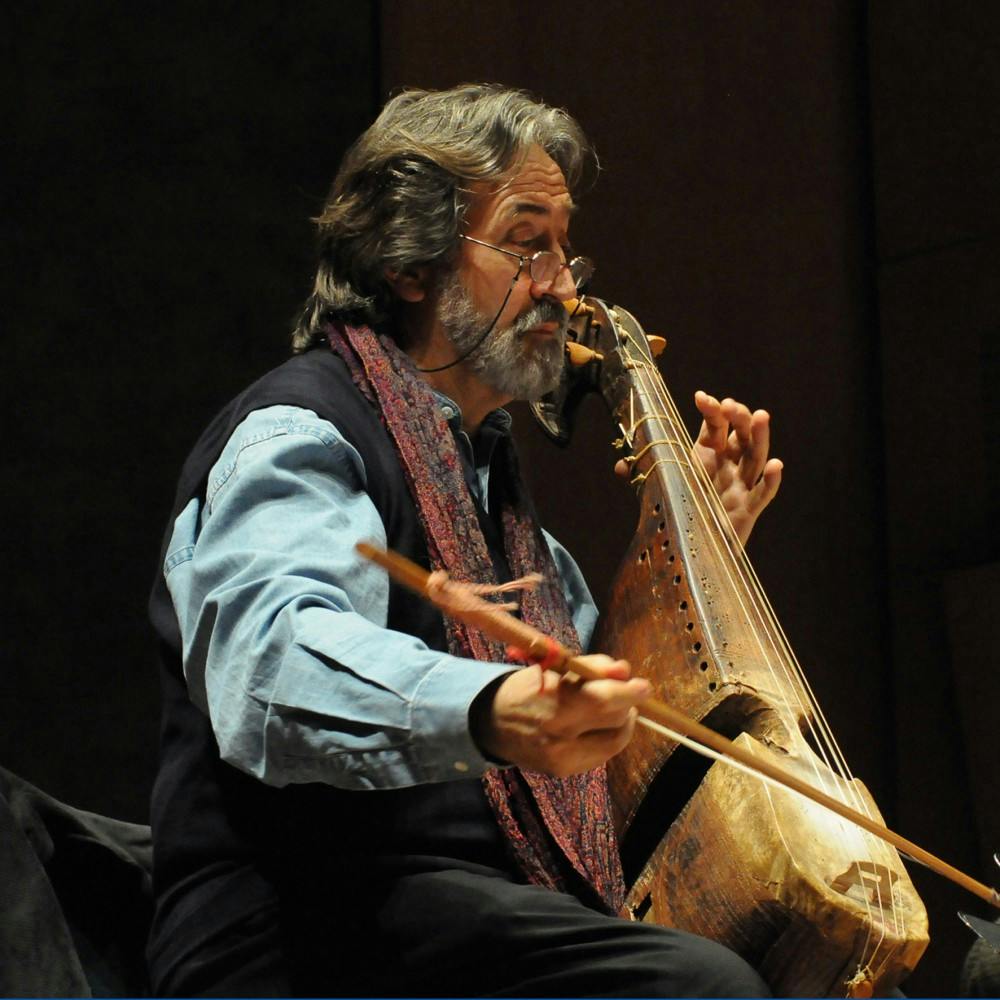I've never seen a performance receive a standing ovation twice, but if there ever was a concert worthy of two, it would be Jordi Savall's The Routes of Slavery.
Featuring artists from Brazil, Mexico, Colombia, Venezuela, Mali, and the United States, the over two—hour musical concert was an homage to the endurance of humanity in the cruelties of bondage. Featuring spoken excerpts of historical documents reflecting on slavery, from Aristotle's Politics to Thomas Jefferson's Notes of the State of Virginia in 1781 to Martin Luther King Jr.'s Why We Can't Wait in 1963, the concert melded thought provoking narration with the mesmerizing melody of traditional instruments. Beyond the oft—seen violin, cello, and guitar, there were also traditional instruments such as the kora, a 21–string harp lute common in Western Africa, the vihuela, a Spanish stringed instrument reminiscent of the guitar, and the baroque harp. The symphony of flute and string was complemented by percussion—hollow rings of the xylophone, drizzling clatters of rain sticks, the lively hiss of maracas—and the lull of goose–bump raising vocals.

The brain child of director Jordi Savall's tireless research and passionate creations of early music, The Routes of Slavery is an epitome of the revitalization of the early predecessors of modern music. Having "rescued musical gems from the obscurity of neglect and oblivion and given them back for all to enjoy" throughout his musical career of over 50 years, Savall collaborated with Montserrat Figueras to found the ensembles Hespèrion XXI in 1974, La Capella Reial de Catalunya in 1987 and Le Concert des Nations in 1989, of which the former two groups were present. Modern and mainstream were but empty adjectives at this concert. Under Savall's touch, what was once old and lost was made new and meaningful with each strum of the vihuela, each syllable ringing from vocalists' lips, and each swaying step of the singers' feet.
The music, sung in no words I could understand, transcended the barrier of language. An intertwining of traditional melodies, the concert included slave songs such as "Another man done gone," early gospel music singing of Joseph and baby Jesus, griot songs of anonymous Malian origin such as "Touramakan," improvisations, and traditional Latin American music. Against the black of my closed lids, I heard threads of familiarity among the medley of violin and vocals and percussion, notes foretelling the development of jazz and classical guitar and modern gospel music. It was a peculiar feeling, listening to this anachronism— so ancient and foreign, a mere remnant of what was taken as the norm centuries before, yet at the same time so nostalgic, a seed of modern music as we now know it.

Opening my eyes, I struggled to pair the vibrance I heard and saw with the despairing nature of what I knew to be the concert's focus: slavery. There was no sorrow, no dull bowing of heads, no deep moaning baritones of loss. What I saw was jewel–toned blues and greens, floral patterns on traditional dress, and gold tunics. What I saw was dancing, the sway of hips, the clapping of hands, the shuffling of feet and the jaunt of shoulders to a lively beat. What I saw were smiles as fellow performers took the audience's breath away; the singers didn't just sing to the audience. They sang to each other, gesturing their hands as if in dialogue, except instead of the dull monotone of spoken word, they had richness of melody and the spice of rhythm.
In contrast to the often solemn narration of the history of slavery, the music was rife with joy. Even when slaves had nothing, not even the clothing on their backs, and were treated like nothing, like objects to be exploited and thrown away, they had music. Song and dance "were the only context in which they could feel free and express themselves—something no one could take away from them." Families might fall, and often did, lives might be lost, and usually were, but their spirit lived on in movement and melody.
A standing ovation was given after the second to last piece. Perhaps a confusion on the audience's part, but no less genuine a praise of the concert. The finale, a boisterous piece of vocals, music, and dancing, was proceeded by a second standing ovation, applause echoing off the walls of the auditorium. It colored the black walls and dark curtains onstage, reminiscent of Savall's concert—a "memory of a long history of unmitigated suffering, in which music became a mainspring of survival and... an eternal refuge of peace, consolation and hope."







